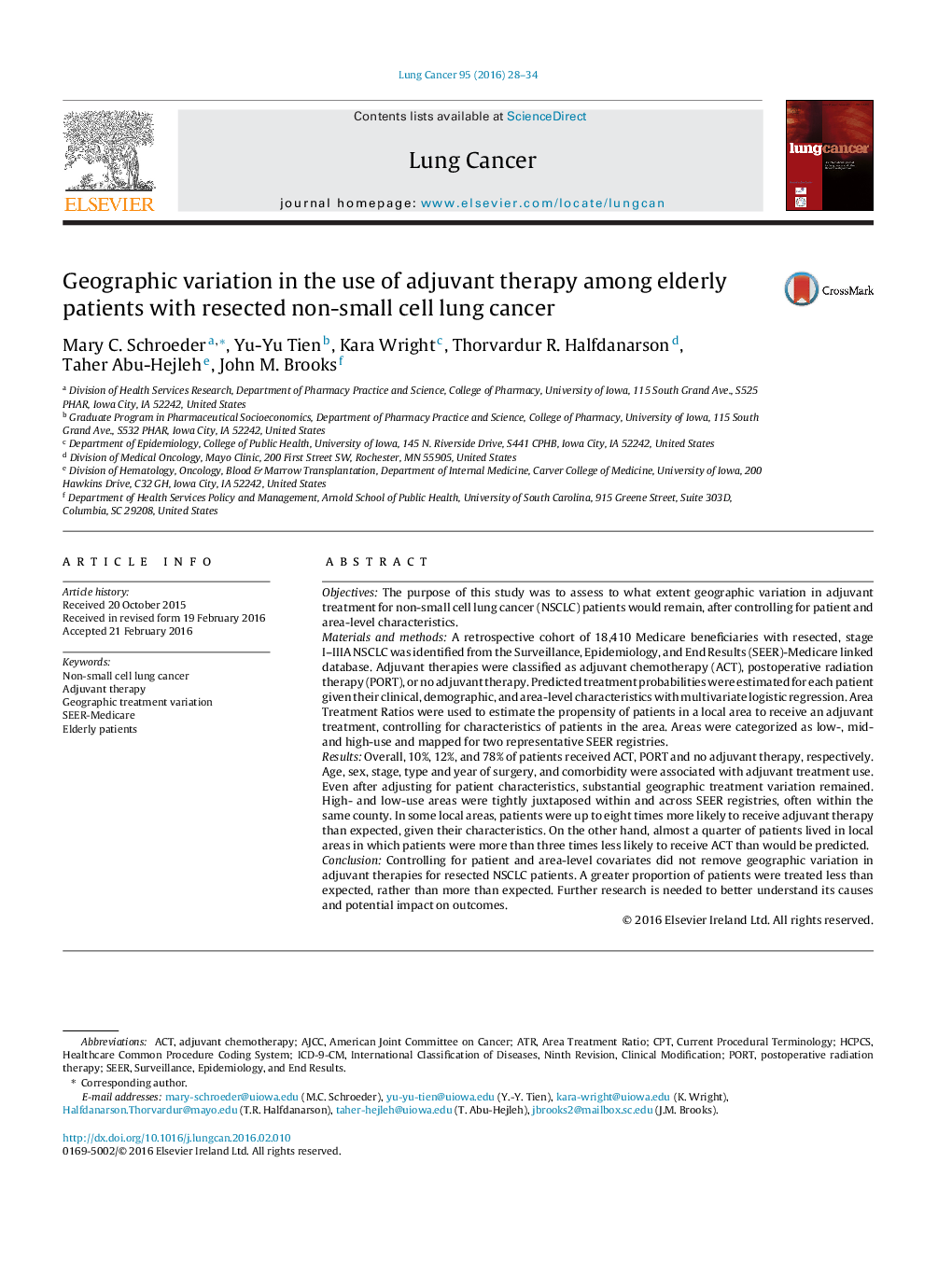| کد مقاله | کد نشریه | سال انتشار | مقاله انگلیسی | نسخه تمام متن |
|---|---|---|---|---|
| 2140417 | 1547972 | 2016 | 7 صفحه PDF | دانلود رایگان |
• In our sample, 10% and 12% of patients received ACT and PORT, respectively.
• Patient and area-level characteristics were associated with adjuvant therapy use.
• Geographic variation in adjuvant therapy remained, even adjusting for covariates.
• More patients were treated less than expected, rather than more than expected.
ObjectivesThe purpose of this study was to assess to what extent geographic variation in adjuvant treatment for non-small cell lung cancer (NSCLC) patients would remain, after controlling for patient and area-level characteristics.Materials and methodsA retrospective cohort of 18,410 Medicare beneficiaries with resected, stage I–IIIA NSCLC was identified from the Surveillance, Epidemiology, and End Results (SEER)-Medicare linked database. Adjuvant therapies were classified as adjuvant chemotherapy (ACT), postoperative radiation therapy (PORT), or no adjuvant therapy. Predicted treatment probabilities were estimated for each patient given their clinical, demographic, and area-level characteristics with multivariate logistic regression. Area Treatment Ratios were used to estimate the propensity of patients in a local area to receive an adjuvant treatment, controlling for characteristics of patients in the area. Areas were categorized as low-, mid- and high-use and mapped for two representative SEER registries.ResultsOverall, 10%, 12%, and 78% of patients received ACT, PORT and no adjuvant therapy, respectively. Age, sex, stage, type and year of surgery, and comorbidity were associated with adjuvant treatment use. Even after adjusting for patient characteristics, substantial geographic treatment variation remained. High- and low-use areas were tightly juxtaposed within and across SEER registries, often within the same county. In some local areas, patients were up to eight times more likely to receive adjuvant therapy than expected, given their characteristics. On the other hand, almost a quarter of patients lived in local areas in which patients were more than three times less likely to receive ACT than would be predicted.ConclusionControlling for patient and area-level covariates did not remove geographic variation in adjuvant therapies for resected NSCLC patients. A greater proportion of patients were treated less than expected, rather than more than expected. Further research is needed to better understand its causes and potential impact on outcomes.
Journal: Lung Cancer - Volume 95, May 2016, Pages 28–34
